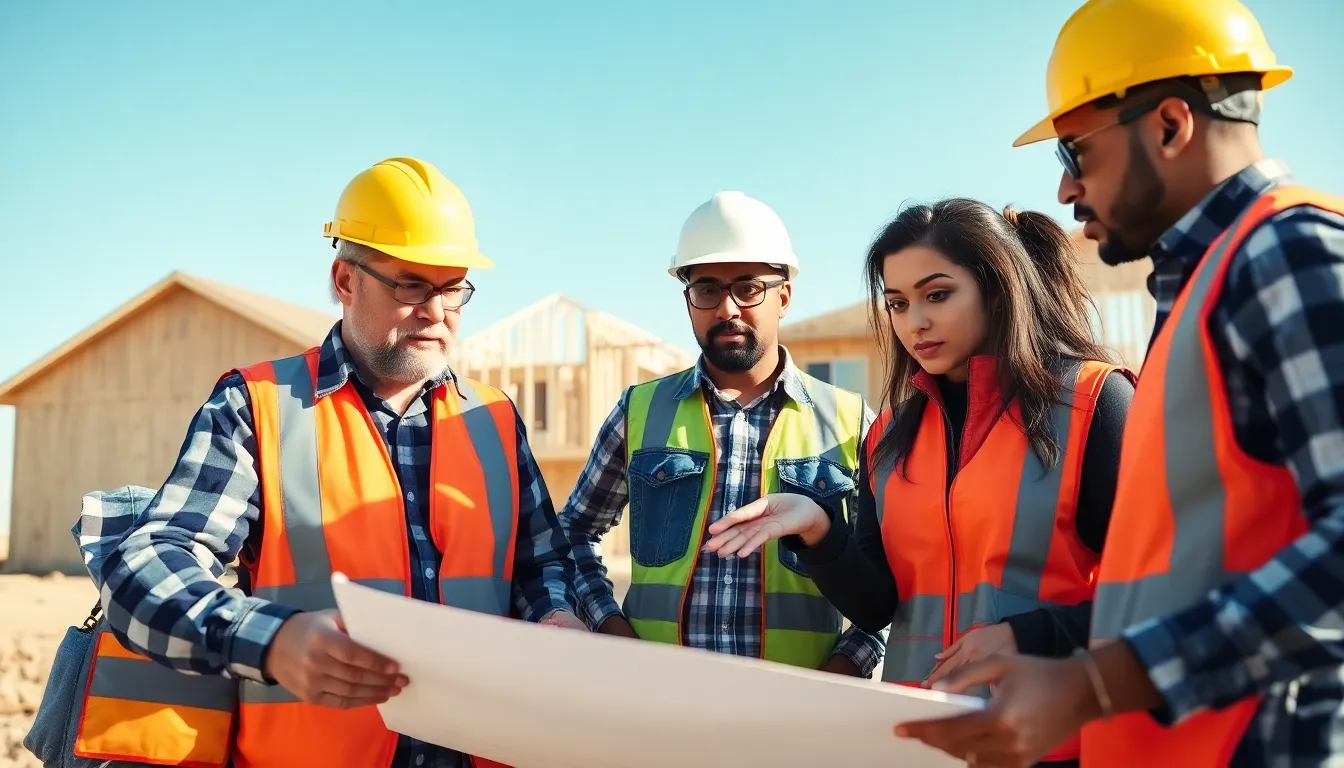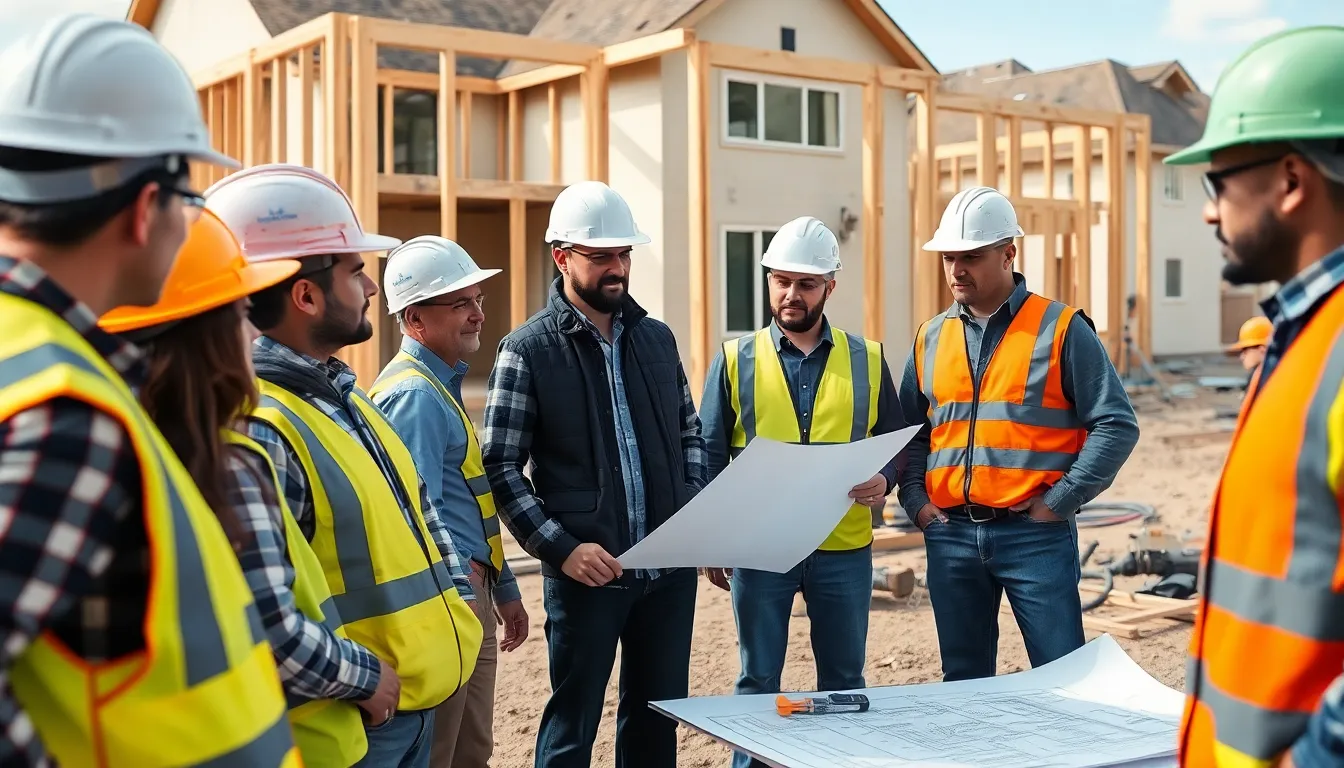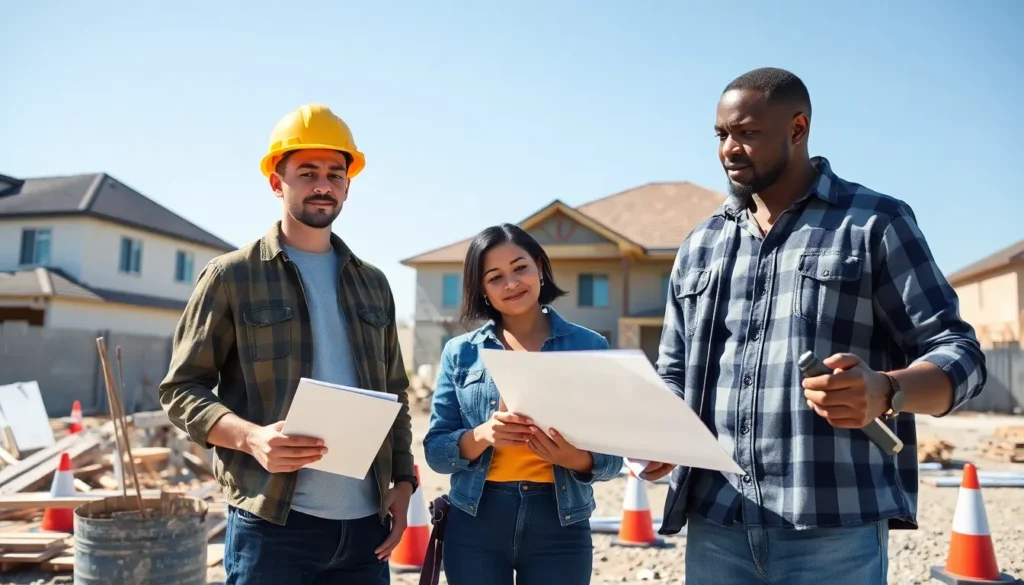Navigating the world of home building permits can feel overwhelming for many homeowners and builders. These permits are essential for ensuring that construction projects comply with local regulations and safety standards. Understanding the ins and outs of the permitting process not only helps avoid costly delays but also ensures a smoother journey toward the dream home.
As urban development continues to rise, so does the importance of securing the right permits. They serve as a safeguard for communities, promoting responsible construction practices. From zoning laws to environmental considerations, knowing what to expect can empower individuals to make informed decisions throughout their building journey.
Table of Contents
ToggleUnderstanding Home Building Permits
Home building permits serve as essential approvals that authorize construction activities. They ensure compliance with local regulations and safety standards.
What Are Home Building Permits?
Home building permits are official approvals issued by local government authorities. They confirm that proposed construction meets zoning laws, building codes, and safety regulations. Permits apply to various projects, including new constructions, renovations, and significant alterations. Homeowners or builders must submit application forms, along with detailed project plans and documentation, to obtain the necessary permission from local authorities.
Importance of Home Building Permits
Home building permits play a crucial role in the construction process. They ensure adherence to local codes, promoting safety and structural integrity. Securing permits helps prevent future legal complications by providing proof of compliance. Additionally, permits facilitate quality inspections at different construction stages, ensuring that work aligns with established standards. These approvals also contribute to community planning and development, fostering responsible construction practices that protect neighborhoods. By obtaining the correct permits, individuals minimize the risk of fines and delays, resulting in a smoother building experience.
Types of Home Building Permits


Home building permits vary significantly based on project scope and requirements. Understanding these types ensures compliance and streamlines the construction process.
Residential Building Permits
Residential building permits cover a range of construction activities, including new home construction, additions, and major renovations. Homeowners or contractors typically apply for these permits. Each jurisdiction may have unique requirements, often necessitating detailed plans and engineering specifications. Common types of residential permits include:
- New Construction Permits: These permits authorize the construction of new single-family homes or multi-family dwellings.
- Addition Permits: These permits allow for enlarging existing structures to add valuable space, such as extra bedrooms or living areas.
- Renovation Permits: These permits apply to significant updates or changes within the existing structure, including kitchen remodels or bathroom renovations.
- Demolition Permits: These permits permit the demolition of existing structures before new construction begins, ensuring safety and compliance with local regulations.
Specialty Permits
Specialty permits focus on specific aspects of construction that require additional oversight or inspections. These permits address particular needs, ensuring that all components of the project meet the relevant standards. Examples of specialty permits include:
- Electrical Permits: These permits are necessary for any electrical system installations or modifications, including wiring or lighting upgrades.
- Plumbing Permits: These permits apply to new plumbing systems or major alterations to existing plumbing, ensuring that all plumbing work meets health and safety codes.
- Mechanical Permits: These permits cover heating, ventilation, and air conditioning (HVAC) systems, ensuring proper safety and efficiency standards are met.
- Environmental Permits: These permits are required for projects that may impact the environment, such as those near wetlands or in areas with specific environmental regulations.
By understanding these permit types, individuals can better navigate the complexities of home building regulations and ensure their projects comply with all necessary codes.
The Home Building Permit Process
The home building permit process involves several structured steps and common requirements that ensure compliance with local regulations. Understanding these components helps streamline the journey from application to approval.
Steps to Obtain a Permit
- Research Local Regulations: Review local zoning laws and building codes that govern the proposed project.
- Prepare Documentation: Gather and organize necessary documents, including property deeds, site plans, and architectural drawings.
- Complete Application Forms: Fill out the required application forms provided by the local building department.
- Submit Application: Submit the completed application along with any required fees to the appropriate local authority.
- Await Review: Allow time for the local agency to review the application, which may involve public hearings or community feedback.
- Address Feedback: Respond to any requests for modifications or additional information from the building department.
- Receive Approval: Once approved, obtain the official building permit, which permits the commencement of construction.
Common Requirements for Approval
- Site Plan: Provide a detailed site plan showing property lines, existing structures, and proposed changes.
- Construction Drawings: Submit architectural and engineering drawings that meet local building codes and safety regulations.
- Evidence of Ownership: Present documents verifying ownership of the property or authorization from the owner.
- Environmental Impact Assessments: Complete assessments if applicable, particularly for projects affecting sensitive areas or ecosystems.
- Proof of Compliance with Zoning Laws: Demonstrate adherence to local zoning requirements, including land use and setbacks.
- Fees: Pay all necessary permit fees, which can vary based on project size and scope.
These steps and requirements are essential for securing a home building permit, facilitating a compliant and efficient construction process.
Challenges in the Home Building Permit Process
Homeowners and builders face several challenges during the home building permit process. Understanding these challenges can lead to more effective strategies for navigating them.
Delays and Denials
Delays in the permit approval process often occur due to incomplete applications or insufficient documentation. Reviewing applications can take weeks or even months, especially in jurisdictions with high construction activity. Denials often stem from non-compliance with local building codes or zoning laws. Builders may need additional supporting documents or revisions to meet requirements, leading to further delays. Examples of common issues include failure to address safety standards, inadequate site plans, or conflicts with existing zoning regulations. To mitigate these challenges, individuals should ensure all documentation is thorough and accurate before submission.
Navigating Local Regulations
Navigating local regulations can be complex and confusing. Each jurisdiction has specific codes and rules governing construction practices, often influenced by various factors such as location and type of building. Builders must understand regulations regarding zoning laws, environmental impact, and safety codes. For instance, areas prone to flooding may impose stricter guidelines on building elevations. Engaging with local planning departments early in the process can clarify requirements and streamline compliance. Regular communication with local authorities and thorough research promote a smoother permitting experience and reduce the likelihood of encountering regulatory hurdles.
Future Trends in Home Building Permits
Future trends in home building permits are shaped by advancements in technology and evolving legislative frameworks. These trends emphasize efficiency, sustainability, and streamlined processes.
Technology and Permit Applications
Technology significantly transforms permit application processes through digital platforms. Online systems permit users to submit applications, upload documentation, and track approval status.
- Automation Tools: Automation assists in processing applications, reducing manual labor and increasing accuracy.
- Data Analytics: Data analytics provide insights into approval timelines, helping stakeholders anticipate delays.
- Mobile Applications: Mobile apps allow users to manage permit applications on-the-go, ensuring real-time updates.
- Geographic Information Systems (GIS): GIS technology enables planners to visualize site impacts, improving decision-making for permits.
Implementing these technologies leads to faster approvals, reduced paperwork, and enhanced communications between applicants and local authorities.
Changes in Legislation
Legislative changes continuously influence home building permits. Standards adjust to address issues such as sustainability, climate resilience, and affordable housing.
- Green Building Codes: New codes often mandate energy-efficient construction practices, necessitating updated permits.
- Zoning Law Revisions: Adjustments to zoning laws may open areas for development or introduce new density regulations, impacting permitting.
- Safety Regulations: Enhanced safety standards focus on disaster prevention, entailing stricter compliance during the permitting process.
- Local Government Initiatives: Local governments might introduce initiatives aimed at expediting permits for affordable housing projects, altering standard timelines.
Staying informed about these legislative trends ensures builders and homeowners can adapt their projects to comply with new regulations, optimizing their planning and development strategies.



